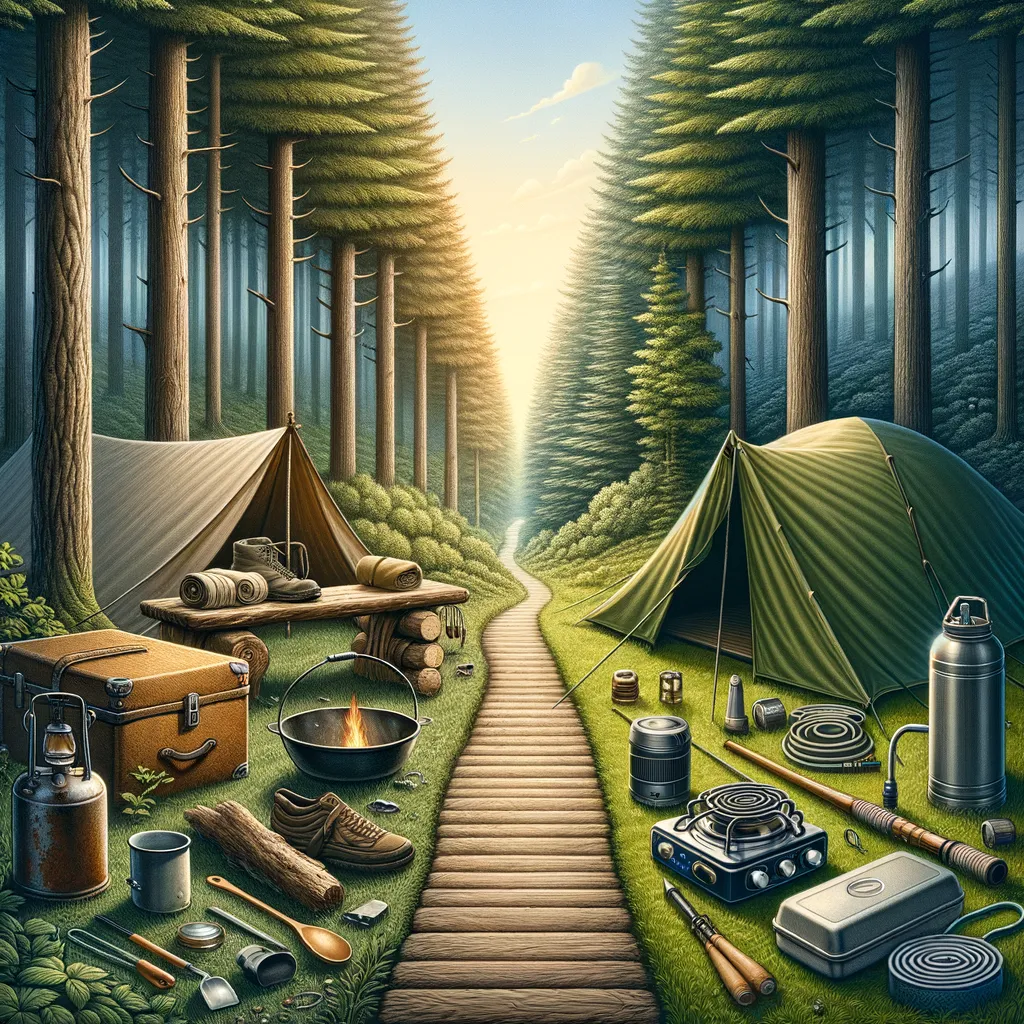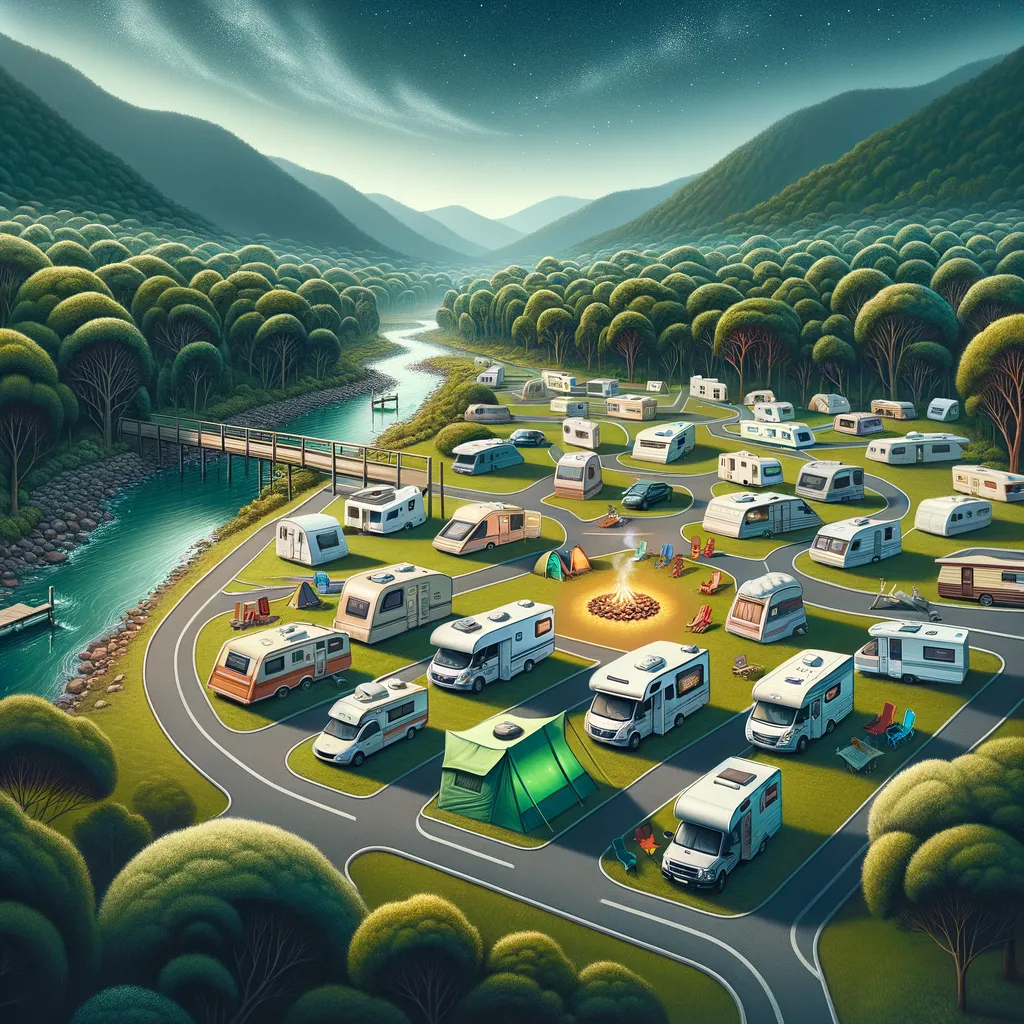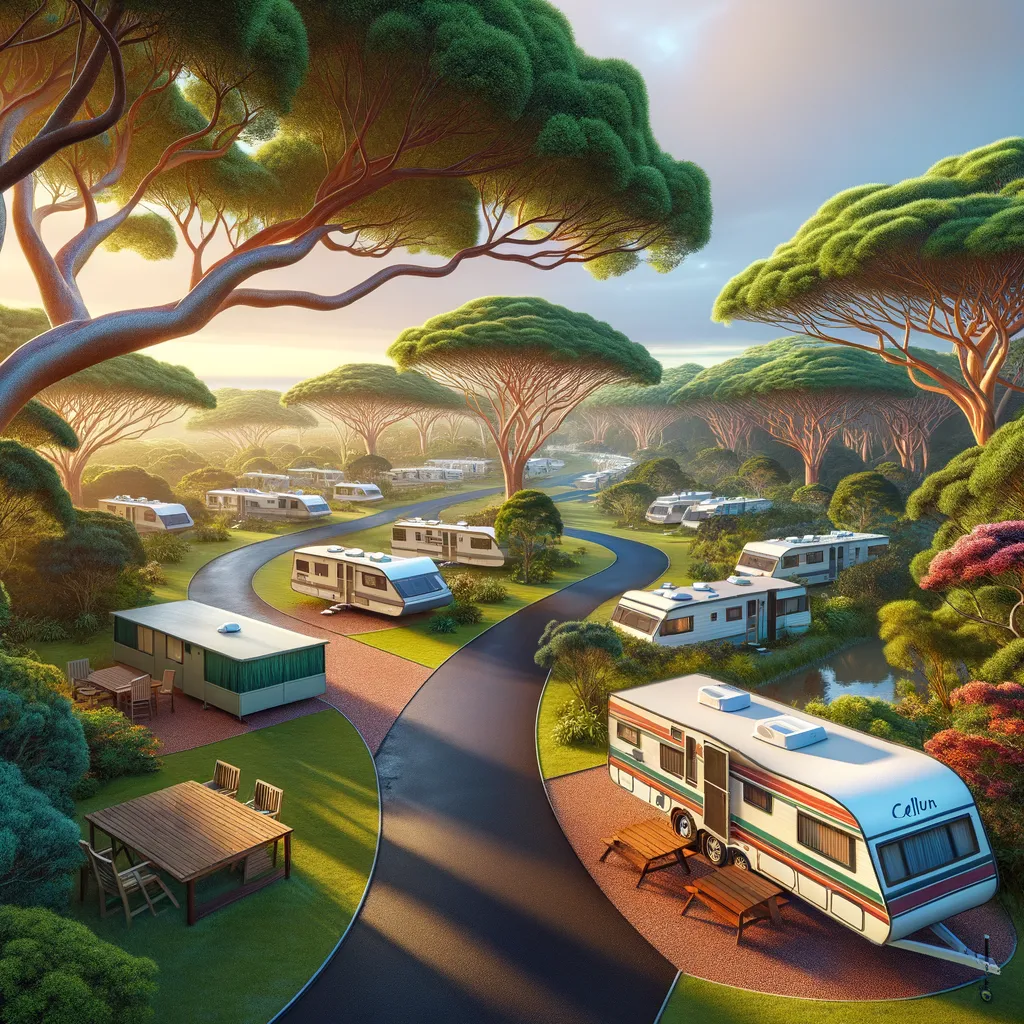Vintage vs Modern: Comparing Camping Equipment Through the Ages
Welcome to our deep dive into the fascinating world of camping gear! Whether you’re an avid camper, a history aficionado, or perhaps a bit of both, you’ve stumbled upon the perfect guide. In this article, we will embark on an intriguing journey through time, exploring the evolution of camping equipment from the rugged, simple tools of the past to the high-tech gear of the present day. For those seeking practical advice or simply curious about how camping gear has transformed over the years, you’re in the right place. Get ready to discover the Outdoors like never before, and gather some valuable Camping info along the way!
Introduction to Camping Through the Ages
The tradition of camping has a storied past, evolving from a necessity to a beloved pastime. Initially born out of necessity for ancient travelers and nomads, camping has turned into a form of leisure and escape for many. This shift has significantly influenced the development of camping equipment, leading to innovations that make the great outdoors more accessible and enjoyable for everyone.
Taking a Look Back: Vintage Camping Gear
In the early days, camping gear was rudimentary, crafted from natural materials or whatever was on hand. Think canvas tents, rudimentary wooden or metal frame backpacks, and simple cooking tools. This era of camping emphasized survival and self-reliance, with equipment designed to be as durable and versatile as possible.
Vintage camping gear holds a charm that modern equipment can struggle to replicate. There’s a sense of connection to the past and resilience in the simplicity of gear like woolen blankets, leather hiking boots, and manual navigation tools. Collectors and camping purists often seek out these items, not just for their aesthetic value but for the stories they tell and the reminder of camping’s fundamental essence: to connect with nature.
The Modern Age of Camping Gear
Fast forward to the 21st century, and camping gear has seen a revolution, thanks to technological advancements and a growing emphasis on comfort and convenience. Today, we have lightweight materials, high-tech gadgets, and equipment designed for every type of camper and every kind of environment. From ultralight backpacks and air mesh ventilated sleeping bags to solar-powered lanterns and GPS navigation devices, modern camping gear makes the wilderness accessible to all.
One of the hallmarks of modern camping equipment is the emphasis on sustainability and eco-friendliness. Manufacturers now prioritize materials and production methods that minimize environmental impact, a response to the increasing awareness among campers of their ecological footprint.
The evolution from vintage to modern camping equipment illuminates the changing priorities and possibilities of outdoor enthusiasts. While the essence of camping remains the same, the means by which we explore and enjoy nature has expanded dramatically.
Conclusion
The journey through the history of camping equipment is far from over. Innovation continues to drive the industry forward, making camping more comfortable, accessible, and sustainable. Yet, despite the advancements in technology, the allure of vintage camping gear and the simplicity it represents remains. As we look towards the future of camping, it’s clear that the spirit of adventure and the love for the outdoors that camping embodies are timeless.
Everything Parents Should Know: Preparing for Camping with Vintage vs. Modern Equipment
Welcome to your ultimate guide on the journey through camping’s rich history and its equipment, tailored specifically for families embarking on outdoor adventures. As parents, choosing the right camping equipment is crucial, not only for comfort but also for instilling a love for nature in your children. This guide compares vintage and modern camping tools to help you make informed decisions for your next family outing. Let’s explore how camping gear has evolved and what it means for your family today.
Understanding the Evolution of Camping Gear: A Parent’s Perspective
Camping with your family is an experience that transcends simply spending time outdoors; it’s about creating memories and learning survival skills. From the simplicity and resilience of vintage gear to the convenience and efficiency of modern technologies, understanding the evolution of camping equipment can enhance your family’s camping experience significantly.
1. The Essence of Vintage Camping Gear for Family Adventures
Introducing your kids to vintage camping gear can be an enlightening experience. Equipment like canvas tents, classic lanterns, and manual cooking tools are not just functional; they tell a story of a bygone era. Utilizing vintage gear can teach your children the value of resourcefulness and appreciation for nature’s unpredictability. The hands-on experience with gear that requires more physical involvement can be both fun and educational, emphasizing the skills of navigation, cooking over a fire, and setting up a traditional tent.
2. Embracing the Modern Camping Revolution for Family Convenience
For families, the innovation in modern camping gear means enhanced safety, comfort, and convenience. Contemporary equipment like lightweight tents, advanced water filters, and portable cooking stoves make it easier for parents to manage outdoor activities. The focus on sustainability in modern gear also offers an excellent opportunity to teach children about the importance of protecting the environment. Items like solar-powered chargers and eco-friendly sleeping bags do not just lighten your load but also your environmental footprint, making them excellent choices for eco-conscious families.
3. Safety Considerations: Vintage Charm vs. Modern Security
Safety is a paramount concern for parents. While vintage gear offers ruggedness and durability, some of it may not meet today’s safety standards. On the other hand, modern camping equipment is designed with the latest safety features in mind, incorporating materials and designs that enhance protection against the elements. Reflective tent ropes, LED lighting, and GPS devices are just a few examples of how modern gear can make camping safer for families.
4. Cost and Accessibility for Families
When planning a family camping trip, budgeting is key. Vintage gear, while unique and durable, can be harder to find and sometimes more expensive due to its collectible nature. Modern equipment, in contrast, is readily available and often offers a wider range of prices, making it easier for families to find options that suit their budget and needs. Additionally, the modular and adjustable nature of much modern gear means it can grow with your family, providing value over time.
5. Educating the Next Generation of Campers
Choosing between vintage and modern camping gear can also be an educational decision. Using vintage equipment can help children learn about history and the evolution of technology. Modern equipment, meanwhile, showcases advancements in engineering and sustainability, demonstrating to children the importance of innovation in our interaction with nature. By balancing experiences with both types of gear, parents can provide a comprehensive outdoor education that spans centuries of camping history.
The journey through the world of camping equipment is an exciting adventure for any family. Whether you lean towards the rustic charm of vintage gear or the cutting-edge advancements of modern equipment, the most important thing is the time spent together in nature. As technology continues to evolve and the call of the wild remains unchanged, the experiences we create and the memories we forge with our families are what truly matter. So pack your gear, gather your loved ones, and step into the great outdoors with confidence and curiosity.
Disclaimer
The articles available via our website provide general information only and we strongly urge readers to exercise caution and conduct their own thorough research and fact-checking. The information presented should not be taken as absolute truth, and, to the maximum extent permitted by law, we will not be held liable for any inaccuracies or errors in the content. It is essential for individuals to independently verify and validate the information before making any decisions or taking any actions based on the articles.





